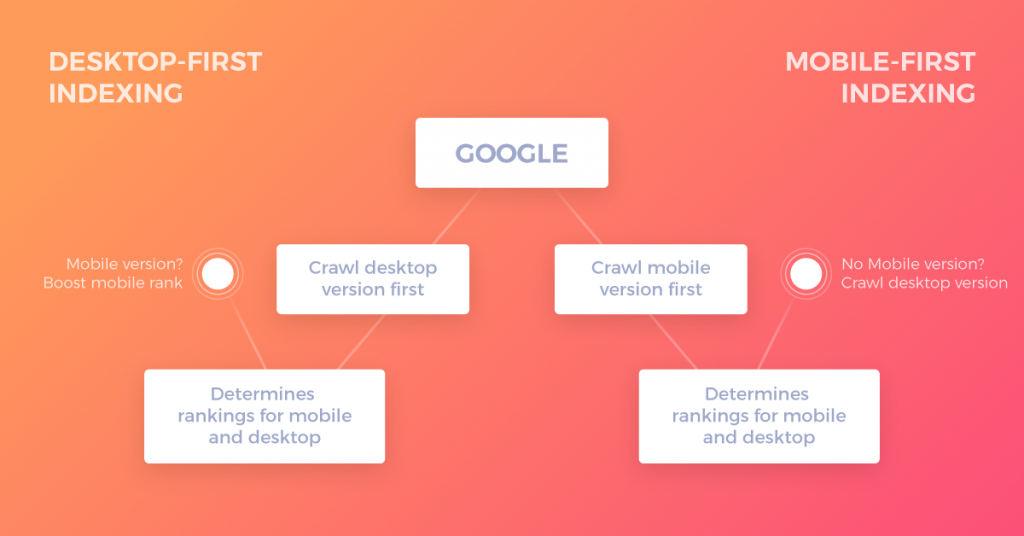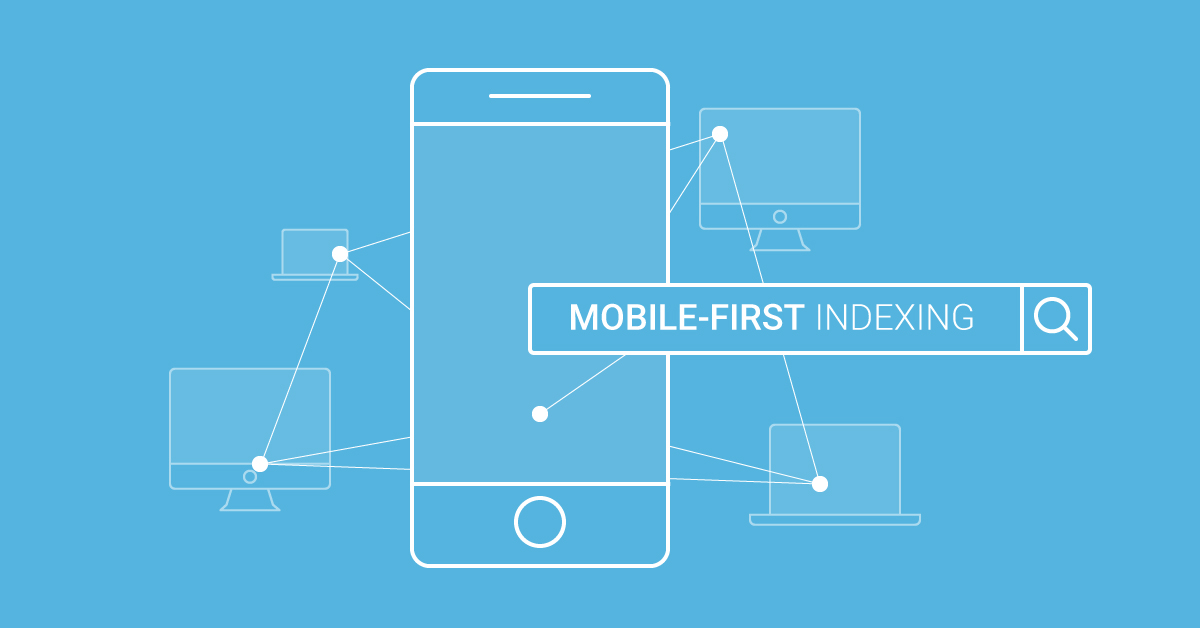Mobile-First Indexing is a big change in the world of SEO.
However, you might not know what Mobile-First Indexing is – or how it even relates to SEO.
Thankfully, it’s actually not a difficult concept to grasp.
In fact, if you keep reading, you’ll learn exactly what Mobile-First Indexing is and how you can use it to improve upon your existing SEO efforts.
Let’s begin!
Table of Contents
What is Mobile-First Indexing?
The concept of Mobile-First Indexing is actually quite simple.
It essentially means that Google will now look at the mobile version of a page first, when determining how well it should rank.
What might surprise you here, is that this applies to both mobile and desktop website search results.
Here’s a segment that comes from Google’s official statement on the matter –

Here’s a great chart that helps bring some light on how the whole process works.

As you can see, with Desktop-First Indexing, Google would initially check the desktop version of your site and the mobile version would be an afterthought.
Now it is the other way around.
Meaning they check the mobile version first – and then the desktop version.
The key takeaway here, is that you need to consider the mobile version of your site, the primary version of your site.
So why would Google even consider making a move like this?
Well, it comes down to the fact that more and more people are now accessing the search results from a mobile device.
A study from 2016, found that over 60% of searches took place on a mobile device. That number has likely risen since then.
When you consider that stat, it becomes clear why Google would make a move like this. If they’re not catering to the mobile users, they’re ignoring the user experience for over half of their users. This is a problem – hence the introduction of Mobile-First Indexing.
What’s the Impact on SEO?
It’s easy to overcomplicate how much Mobile-First Indexing can impact SEO. But it’s going to be familiar territory in a way.
Something you need to keep in mind here, is that Google is only just starting to roll this out. This means that Google will treat this like an experiment in the short term. Therefore, don’t feel as though you are under a lot of pressure to make changes.
First things first, you need to make sure your website has a mobile version.
If you do not have a mobile version of your website, the algorithm will take note of this. Your rankings will potentially be harmed as a result.
Of course, this is all going to be relative, as it will depend on what your competitors are doing. To avoid anything unfortunate, though, you should assume they’re doing everything they can to improve their SEO efforts.
If you’re using a ‘responsive theme’ for your website, you likely won’t have to change anything. A responsive theme, is when the theme adjusts its design, to suit whatever device is being used to access the site.

The same applies if you’re using a dynamic serving site. This is where the server delivers a different site, depending on what device is being used.
Note: We’ll talk about this in more detail later, but if you are using this setup, make sure your mobile site is high-quality. The content on your mobile site should be on par with what people can expect when visiting the desktop version of your site.

Both of these statements are backed up by Google’s own content –

Of course, if you don’t have a mobile version of your site, you will need to make some changes.
Perhaps the easiest way to get this sorted, is by investing in a responsive theme. There are many websites that will provide you with a good looking responsive theme, for under $100.
Content on Mobile Site = Content on Desktop Site
You also need to make sure that the quality of the content on your mobile site, is the same as what would be found on your desktop site.
As you probably know, Google values high-quality content. Don’t expect Google to cut you some slack, just because you have good content on your desktop but not on your mobile site.
You also need to make sure the structured data is taken care of.
Make sure the structured data for your desktop site is the same as what you’d find for your mobile site.
You can verify that this is done, by using the structured data tool, provided by Google.
You also need to make sure the Google Search Console is aware of your mobile site.
If you have not done so already, you need to login to the Search Console and verify that you are the owner of the mobile site.
You should also check that Google is able to index your mobile site.
You can do this by using the ‘Robots.txt’ testing tool. Using this tool is important, because even if you have a mobile site, it won’t matter if Google isn’t able to access it.
You also need to make sure that the mobile version of your website loads quickly.
Google recently announced that they’re going to consider ‘page speed’ when ranking mobile websites.
Here’s a segment of what they have to say on the matter –

You can use the PageSpeed Insights tool to help you figure out how fast the mobile version of your website is loading. This tool is especially helpful, because it will also give you suggestions as to what can be done to improve things.
In any case, these are just a few suggestions as to how you can prepare for this update. There’s no telling what else Google might suggest. Because of this, you should keep an eye on their blog, to make sure you do not miss any crucial pieces of information.
You should also monitor their best practices section, of which is dedicated to Mobile-First Indexing.
Conclusion
The SEO landscape is always changing. Today it is Mobile-First Indexing – but tomorrow it will likely be something else.
In this post, we have taken a look at some of the steps you can take to prepare for this update. It can all be a bit overwhelming at the moment. However, remember that Google is only just starting to roll this out – so you have plenty of time to make the required changes.
What matters most, is that you do things the right way. Otherwise, you’ll end up making a few expensive SEO mistakes, that will hurt you rather than help you.
Best of luck!


